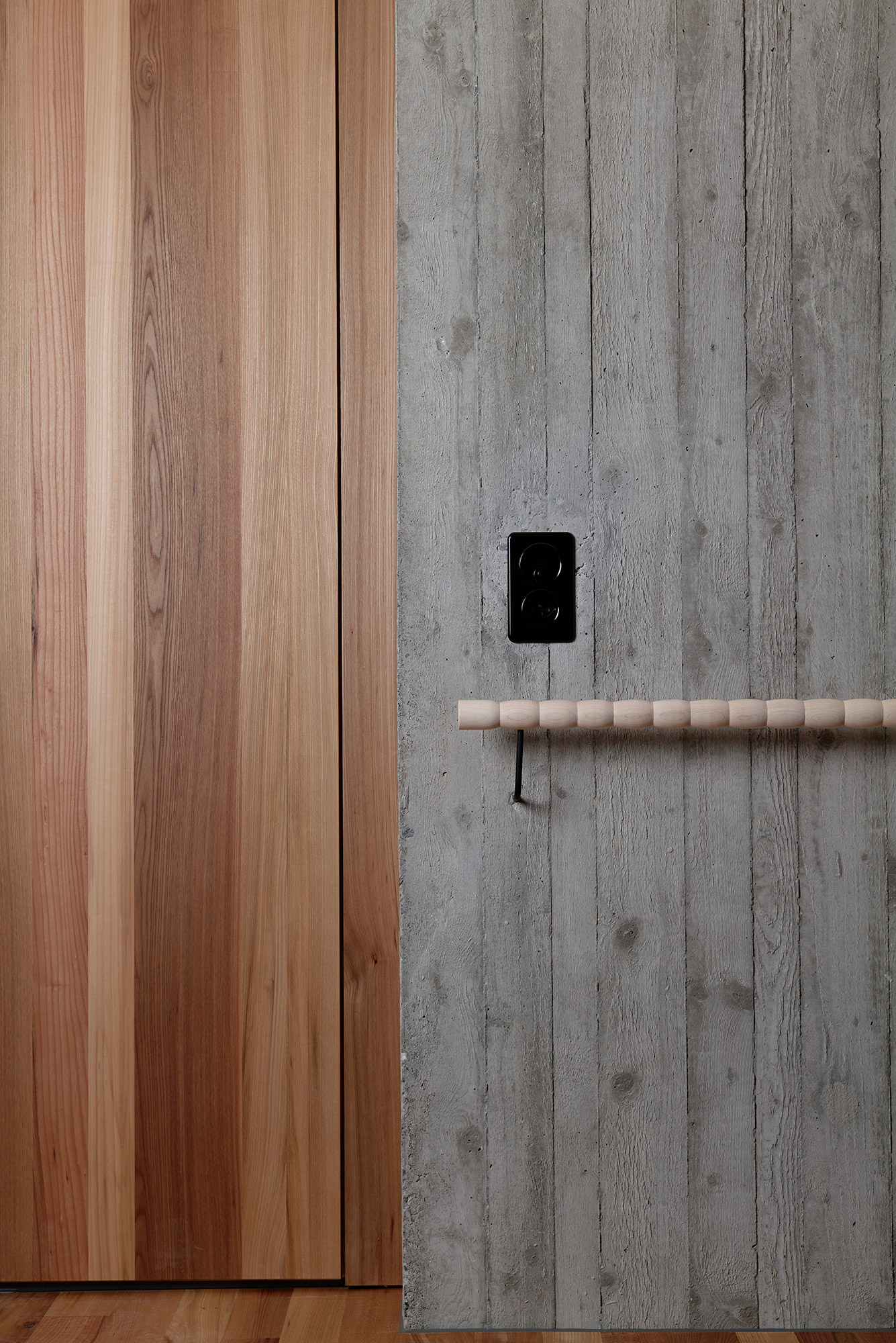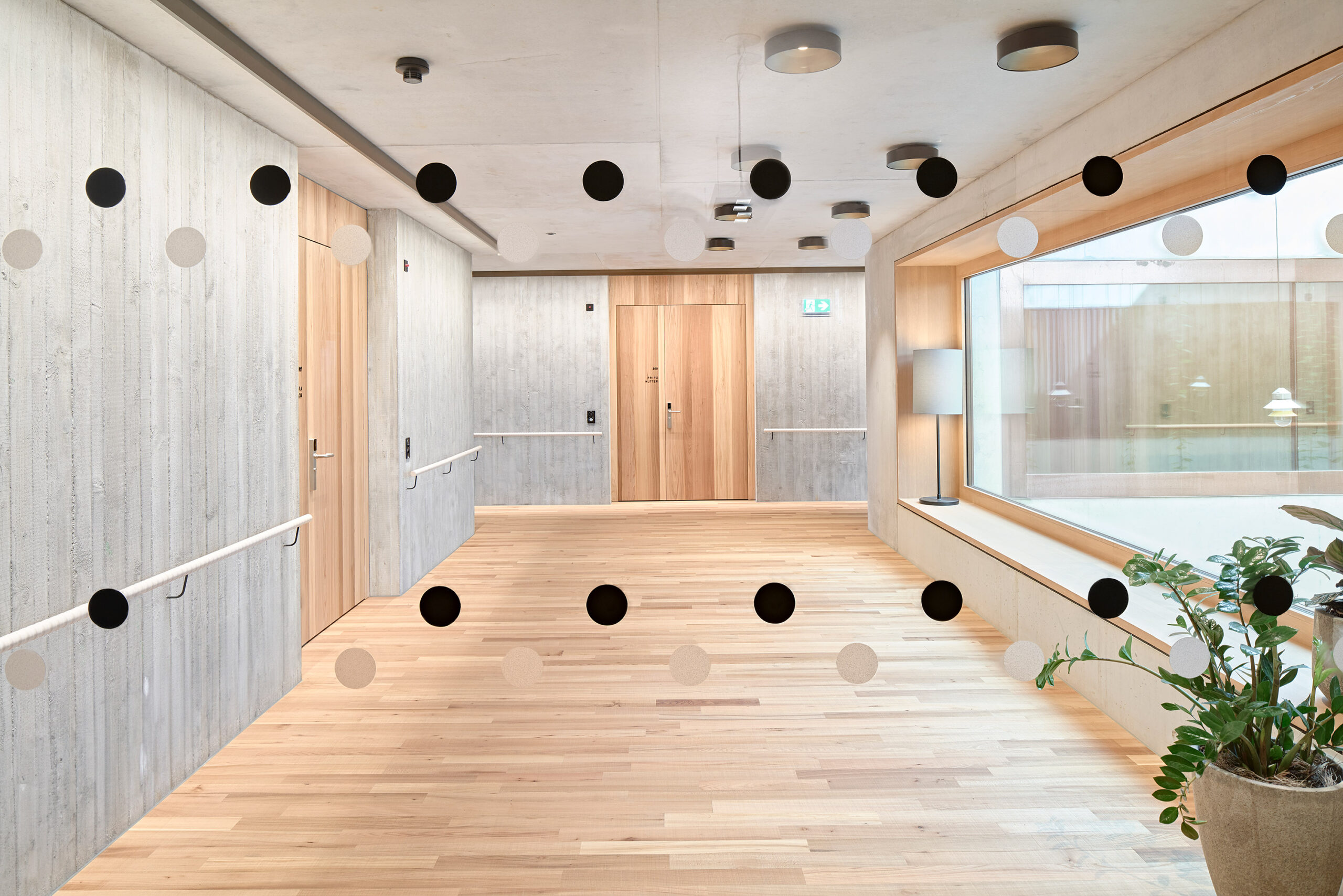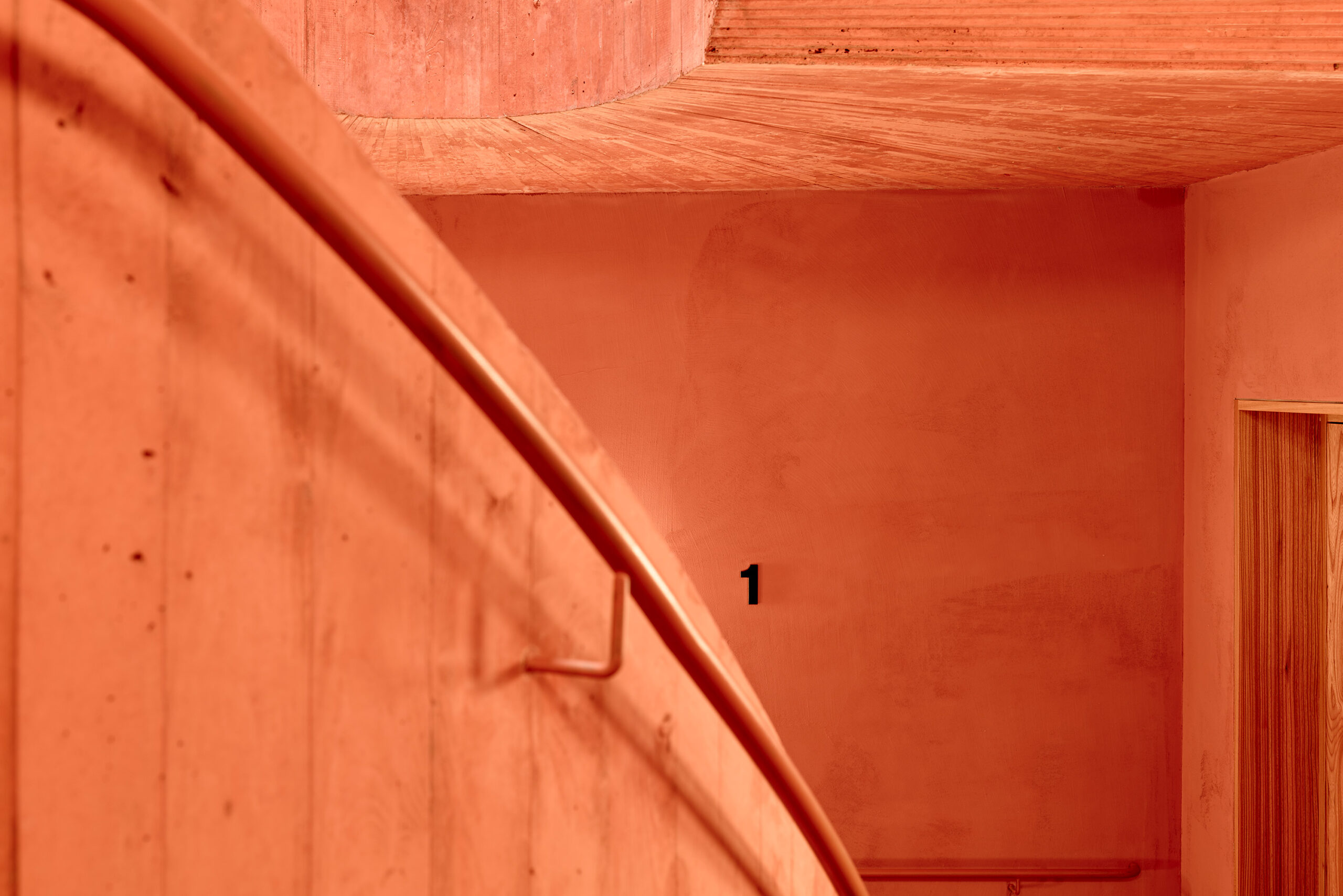


In institutions such as hospitals, care facilities, or kindergartens, where cognitive abilities are limited for a variety of reasons, the emotional level is important. Atelier Andrea Gasser, which always searches for new answers to questions about how good design affects us, is currently working on an exciting approach in the area of signage. There haptics – in product design a must – seem to be a poor relation. But for the designer visual directional systems are more than markings, more than pure positioning in space. There is also an intuitive kind of orientation, which functions on an emotional level. In directional systems this is often underestimated or even ignored, says Andrea Gasser. Working in close collaboration with the architects Cukrowicz Nachbaur, a current project that focuses on the role of signage in care facilities for elderly people suffering from dementia or with poor eyesight, addresses the impact and importance of sensual stimuli in orienting oneself in space: what is left when eyesight, hearing and the ability to recognize begin to fail? How can we offer old people greater safety and orientation? The goal is to develop a new guidance system that uses the sense of touch.
The influence of haptics in signage is underestimated. Through our skin we are in permanent contact with the outside world. In a study undertaken with elderly people, including people with dementia and those with visual disability, we looked at how we can help people by introducing the element of touch to signage.
The goal is not just to show the shortest way, our aim is to understand the way. In order to make the world understandable, in our signage we develop a second level, connecting the cognitive with the emotional level. Nothing emotionalizes and convinces us more than that which we can grasp with our own hands and experience with our fingertips.
Together with the old people in the building we examined various kinds of wood, surfaces, and forms. From this study we developed handrails that help people to find their way around on the different floors and in the various parts of the building. The handrails were made and shaped by hand. The craftmanship brings the structures alive and each linear metre is unique.
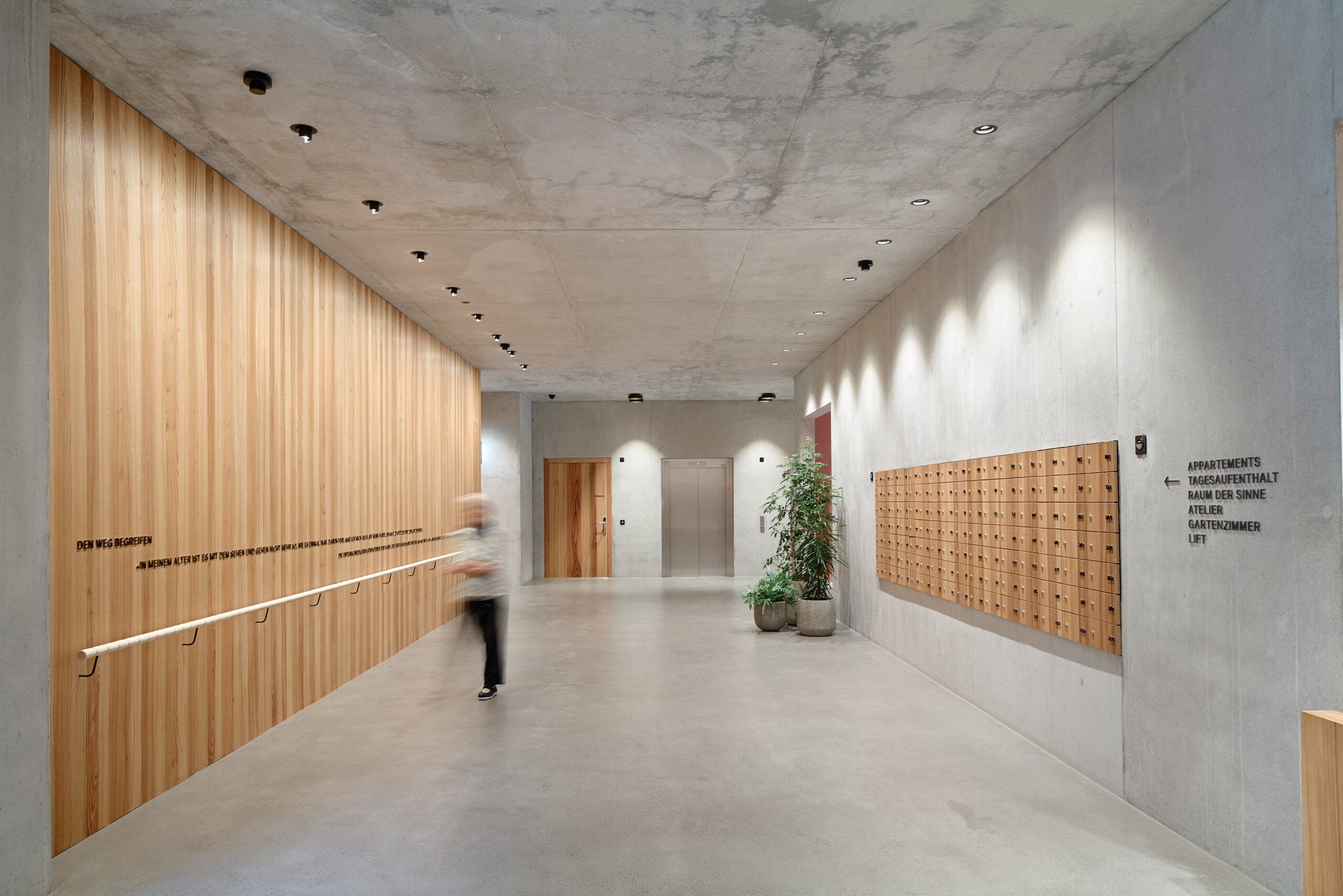
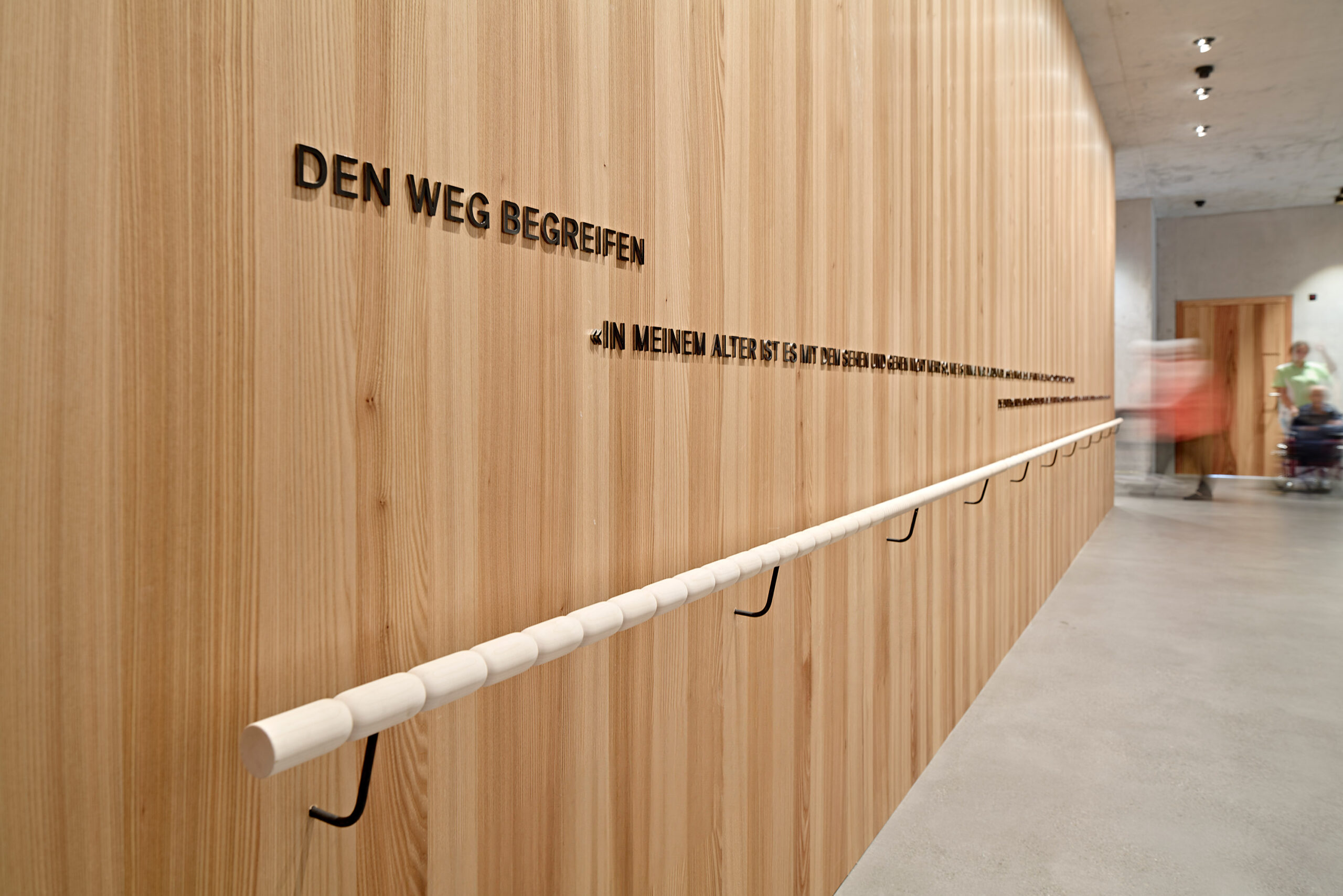
For both residents and visitors in the entrance area there is an overview and a description of the different handrails. Accompanied by the text:
UNDERSTANDING THE WAY
“At my age my sight and hearing are no longer what they once were. Therefore, I rely on my hands to support me and to help me find my way around. The different structures and profiles of the handrails in this building are an immense help. I can feel with my hands where I am and therefore understand the route.”
